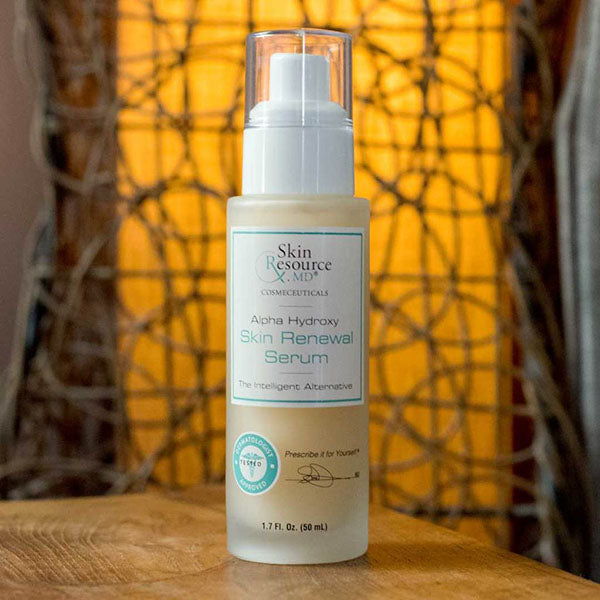What’s an exfoliant you ask? Exfoliants are an essential part of a comprehensive skincare routine. But if we’re getting down to the technical definition, exfoliants are a skincare product that removes dead skin cells from the skin’s surface.
Imagine the dull, lifeless appearance of a dresser covered in a layer of dust. Now, picture that same dress after it’s been dusted and buffed. Dead skin cells act as the “dust” that dulls the beautiful, glowing skin underneath. Exfoliants are the “dusters” of the skincare world.
They’re made in two types—physical and chemical. Deciding between the two isn’t always easy, and it’s not a matter of right or wrong. It’s a matter of what works best for you and your skin type.

Physical Exfoliants
The first and probably better-known exfoliants are the physical exfoliants. These exfoliants take a manual approach to dead skin removal. They contain a rough, gritty ingredient that breaks up dead skin cells to remove them from the skin’s surface.
With these exfoliants, you’re buffing away lifeless skin from the surface of your face. After you’ve (gently) rubbed in the exfoliant, you wash away the product and the dead skin cells with it.
However, watch out for abrasive physical exfoliants. Ingredients like ground seeds create harsh abrasion that can create microtears that irritate the skin. Exfoliants with naturally round particles gently remove dead skin cells and leave behind clear, glowing skin.
SkinResourceMD’s Crystal Clarity Exfoliation Scrub relies on volcanic microcrystals to gently remove dead skin cells and polish the skin’s surface. The microcrystals in this formula are paired with moisturizing ingredients that soften acne scars, reduce fine lines, and condition the skin at the same time. The combination prevents irritation, hydrates the face, and reveals the skin’s fresh, natural beauty.

Chemical Exfoliants
You might shy away from the word chemical, but in this case, harsh chemicals never see the light of skincare day. Chemical exfoliants contain specific chemicals that break the bonds between skin cells rather than manually breaking and removing the cells like a physical exfoliant. Common exfoliating chemicals include alpha hydroxy acids such as lactic or glycolic acid, beta hydroxy acids like salicylic acid, and fruit enzymes.
Check out SkinResourceMD’s Alpha Hydroxy Skin Renewal Serum that exfoliates while preventing fine lines and wrinkles. This formula combines glycolic and lactic acid to rid the skin of dead skin cells. These two ingredients also have the benefit of brightening, smoothing, and reducing hyperpigmentation issues. Like other SkinResourceMD products, the Renewal Serum also contains ingredients that protect and nourish the skin to hydrate it while removing the dull outer skin layer. It’s a soothing option that reveals beautiful skin.
What Should You Use and Why
The decision between physical and chemical exfoliants comes down to personal preference. Some people prefer the grit of a physical exfoliant. However, always use these products with a gentle hand. Large, abrasive particles can potentially irritate the skin. Either opt for a gentle physical exfoliant like SkinResourceMD’s or stick to a chemical exfoliant.
Chemical exfoliants are generally gentler on the skin. Many of the chemicals used to remove dead skin cells are also used to treat acne and aging, so you really get a two- or even three-for-one with these products.
Some skin types may do better with one type of exfoliant over the other. For example, sensitive skin types often do well with a chemical exfoliant because there’s less risk for skin irritation due to microtears. Those with acne-prone skin may prefer an exfoliant with a light, gentle texture to cut through oil.
Also, consider the other products you use in your skincare routine. Skincare products within one line often work together to exfoliate, moisturize, and protect the skin, complementing each other with their formulas.
How to Use Physical and Chemical Exfoliants
First, always follow the instructions that come with the exfoliating product. For physical exfoliants, the general guidelines are to use the product once or twice a week or three to five days per week for problem skin. Chemical exfoliants are okay for everyday use once or twice a day, depending on the formula.

Make sure to wash your face with a gentle facial cleanser before applying the exfoliant. Moisturize the skin after either washing off the exfoliant or letting it absorb into the skin, and always apply sunscreen.


